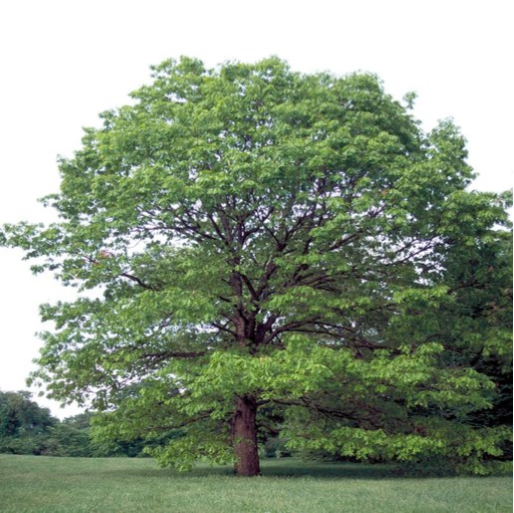- 2024 Native Trees
- >
- Native Trees
- >
- White Oak (Quercus alba)
White Oak (Quercus alba)
Height: 50 to 80 feet
Spread: 40 to 75 feet
Sun: Full sun to part shade
Flower: Insignificant
Leaf: Fair Fall Color (Brown to Red to Wine)
Use: Wildlife, Lumber
Native to: Jefferson County
If oaks are the Kings of the Forest, then White Oak may be the most important tree in the region.
The White Oak is a host tree to 477 species of butterflies and moths making it the largest host species in the Ohio forest. The tree is also a vital food source for all wildlife. The tannins in the wood are used for dyes and stains, while the tannins in the leaves causes slower decomposition during the winter months giving many caterpillars and small animals such as wood frogs a place to seek shelter to hibernate.
The wood is high sought after for the lumber as it is a key component of the furniture and is the only wood species used for whiskey and bourbon barrels. The tree is in a rather rapid decline in the region as it is being heavily harvested for its wood.
The White Oak has an elaborate and complex root system which makes it a great erosion control species and is finding a new life as a tree sought for carbon sequestration. Moreover, the root systems create a large mycorrhizal network of mycelium fungus which creates a stock exchange of communication and trades between a variety of species.
The white oak has played important roles in the history of Ohio. The Mingo people had a specific name for the tree, kaka'ta'. In 1774, Lord Dunmore marched his Virginians in Ohio after the victory at the Battle of Point Pleasant, upon arriving on the banks of Scippo Creek in central Ohio he saw a large white oak with a lighting scar upon its trunk exposing the white inner wood. Taking out red chalk he scrolled upon the tree “Camp Charlotte” and it was here that he met with the great Shawnee Leader Cornstalk and negotiated a peace ending Lord Dunmore’s War.
When America was first settled the British thought that the white oak was inferior to the English oak. This conclusion persisted until the USS Constitution soundly defeated the HMS Guerriere during the War of 1812 and earning the victorious vessel the nickname “Old Ironsides.” White oak was so high regarded after the fact that Sir Winston Churchill would not come to meet with President Roosevelt during World War II until FDR assured him the minesweeper boats leading his ship was built with white oak from Hyde Park.
The Steubenville and Indiana Railroad was built using only white oak railroad ties for longevity and durability. ■






